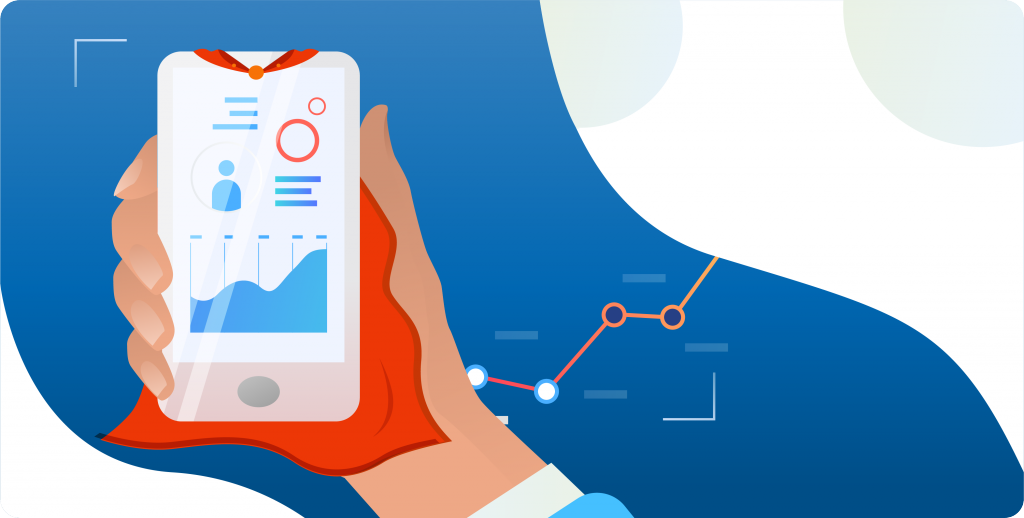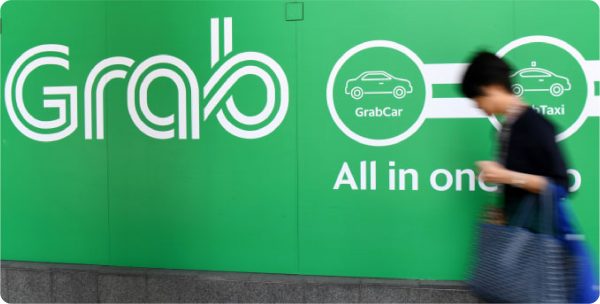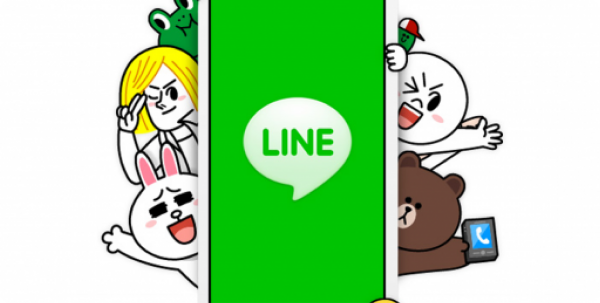Super apps are just appearing in the US and European countries, while in the Asian-Pacific region they already became a natural part of daily routine. So what are super apps and what is so special about them?
written by:
Anastasia Borodinets
Super apps are just appearing in the US and European countries, while in the Asian-Pacific region they already became a natural part of daily routine. So what are super apps and what is so special about them?
The term “super app” was introduced in 2010 by the BlackBerry founder Mike Lazaridis. He defined it as a closed ecosystem consisting of multiple apps, which are used daily due to their complete integration and ease of use. While Lazaridis implied that a super app is an ecosystem, today the term describes the combination of social, financial, service and entertainment functions in one app.
Super apps order a wide range of virtual services and products: for example, users can chat with their friends, book tables in restaurants, call a taxi and pay utility bills. It works like a combination of WhatsApp, Facebook, eBay and Uber with one sign-in and unified user experience. To the US and European banking, the rise of super apps in the East may seem a local trend, however, some industry experts consider the worldwide expansion inevitable.
What stands behind financial super apps is their performance as cloud intermediaries, accessing and gathering data in a new ecosystem.
Let’s analyze the phenomenon of successful Asian super apps to figure out best practices, which can be used by banks and fintech in the West.
Why Bankers Should Keep an Eye On Trendy Super Apps
- Super apps can distance banks from their customers
For example, in addition to basic banking services, WeChat and Alipay offer saving and investment products, which are basically provided by the banks. It means, banks’ activities are limited to regulating processes without direct communication with the customers, while the super app plays the role of the intermediary and builds customer experience.
- They might have a better perspective of their customers to target financial products and services more precisely
By having an impressive amount of data about customers, super apps use new methods to improve customer experience and make it more relevant, personalized and valuable. The collected data can be used to improve targeting and business processes, for example, using transactional information or social media when considering an application for a loan. Traditional banks can be left behind according to such parameters as personalization and simplicity of use.
- However, super apps are interconnected with banks and help them build a reputation in the market
A large number of payments within super apps are still transferred via banking infrastructure. For example, WeChat uses WePay (a JPMorgan Chase system) for payments and WeBank (China’s first digital bank) for banking products. Another group of super apps, like Grab, Line, and Gojek (Get) established partnerships with banks in order to provide online-to-offline (O2O) services, drawing potential customers from digital channels to physical stores. It’s a win-win strategy. On one hand, tech startups with super app ambitions receive some sort of credibility and trustworthiness from traditional banks. On the other hand, banks benefit by making their way to the frontier of digital banking, getting access to a large user database and big data analytics.
Grab
Grab started from offering transport services, and then significantly expanded the list by including food delivery, medical advice, financial solutions, and more.
In spring 2018, the Malaysian ride-hailing company Grab acquired the local Uber organization, including the UberEats food delivery service. Later it invested in OVO, Indonesia's leading electronic payment platform.
To launch GrabPay digital payments Grab raised $2 billion from SoftBank and China’s Didi Chuxing. One special aspect about GrapPay is a zero merchant discount rate (MDR), the total transaction fee associated with digital payment. This feature helps to support the interest of entrepreneurs and smaller organizations. Grab is highly likely to decrease the use of cash and introduce online financial services to regions, where traditional banks are not so popular.
By the second half of 2019, the company will add a new product to GrabPay: a co-branded KBank e-wallet created with Kasikorn Bank. Later the range of services is going to be expanded by adding nano-finance and microloan offers.
In addition, the company is about introducing a telehealth platform in partnership with Ping An Good Doctor and delivering products from the HappyFresh service. What’s more: an online insurance marketplace for entrepreneurs is going to be launched in cooperation with Zhong An, China’s first fully-online insurance company.
Gojek/Get
The company was launched as a ride-hailing service in 2011. Then it was transformed in the all-in-one app, allowing users to pay online, and order products and services.
You can order over-the-counter medicines, purchase tickets for events, pay bills or insurance fees, find out about discounts and promotions, order laundry services and even call a masseur, cosmetologist or hairdresser.
Later Gojek became one of the key competitors for Grab in the Asian-Pacific region: in 2018 the company entered the market of Vietnam and proceeded to Singapore and Thailand. The app currently provides 4 services: Get Win motorbike hailing, Get Food, Get Messenger and Get Pay, a beta version of the e-wallet. It cooperates with over 20 thousand local restaurants and with the same number of drivers (both for taxis and delivery).
Recently announced partnership with Siam Commercial Bank (SCB) helps Gojek/Get expand its financial services via the SCB Easy app with over 10M users: they can try the Get wallet. In addition, businesses can transfer funds from Get Pay to SCB accounts with no fees. To provide digital loans and launch a ride-hailing service with no taxi licenses, Get is waiting for the approval of the Bank of Thailand.
Line
Line Corporation is another super app in Thailand offering multiple services to 44 million users. It was launched like a messenger and now is following the strategy of expanding financial services. Similar to Grab, Line started cooperation with KBank and is working on an undisclosed financial product coming in 2020. In addition, the brand is going to launch its own in-app customer credit score to make microloans available in Japan and Thailand. The credit score will be calculated with in-app user data and without violating any private data: in-app private messages are end-to-end encrypted.
In 2018 Line launched its own cryptocurrency - Link, which is still unstable: the monthly price fluctuations are more than 400% in both directions (from $4.54 to $1.13).
Not so long ago the Rabbit Line Pay was introduced (in cooperation with Rabbit, a local payment service). Today it is accepted at BTS Bangkok Skytrain stations and is one of the most convenient ways to pay fares.
WeChat and Alipay
Chinese flagman super apps, like WeChat or Alipay, offer almost everything customers may need. These apps are taking an equally dominant position in China: with a 90% and 94% usage rate by adult Internet users, respectively, and with 86% of users reporting that they use both. In addition, this pair of super apps is skyrocketing in Indonesia, Malaysia, and the Philippines.
WeChat was released in 2011 by Tencent, an Internet giant from China. Today the app has about 1 billion monthly active users (MAU) (about 65% of the Chinese population) with 63 million users over 55 years old. The app serves as a platform for instant messaging, ride-hailing, booking doctor’s appointments, making payments, ordering food delivery and a lot more.
Alipay payment system affiliated with Alibaba showed 647 million MAU in April 2019. The app also offers additional services with 400+ MAU: retail, utility bill payment, booking. Almost 70% of Hello Chuxing (bike-sharing and ride-hailing platform) users make payments via the Alipay mini-apps.
To improve the visibility of additional services, Alipay implemented a swipe-down menu on the homepage- it allowed boosting user revisits by 20 times, according to Alipay statistics.
Do Banks Have Time To Take the Lead?
A major challenge for banks is to realize how they can deliver value as super apps do and if they have enough resources to respond to the shifting customer needs before super apps become a super revolution. So what is the right model for banks to stay relevant in the upcoming years?
Option 1. Leveraging open banking architecture and APIs to bring industry giants in one app.
Option 2. Cooperating with other businesses to develop a super app for the Western market.
Here Are 5 Key Aspects to Consider:
- Open data and APIs
Some banks are working with tech platforms to become a part of their ecosystem in large-scale API platforms. For example, DBS Bank already has a platform like that, which grants FinTech players, software developers and other companies access to multiple services, such as fund transfers, P2P services and more.
- Powerful data and analytics systems
Investment in AI, data analytics and other top-notch technologies can change the face of banking as we know it. However, such investment requires millions of dollars and is a realistic scenario for large banks.
- Flexible partnerships
As the market competition keeps transforming the playing field, partnering and collaborating with other players is a chance to leverage the strengths of both. “Banking as a platform” concept requires a lot of agility from all parties and may not be suitable for traditional banks with a classical approach to business.
- Defined strategy
Using the assistance of experienced software development vendors, banks can become leaner and more agile in adopting digital market trends. Starting from core banking infrastructure updates to the migration to a cloud-based microservices platform - the primary goal is to define the strategy. The following goal is to find a reliable software development company to help bring it to life.
The Bottom Line
A shift in consumer preferences is leading towards super apps flourishing in the West. As you can see, after about a decade of service fragmentation and unbundling, people prefer re-bundling again.
The consolidation in the banking and fintech industry is a highly realistic scenario for many banks now, so traditional financial institutions have an opportunity to get a stronger foothold by cooperating with tech platforms, which could expand their bank-as-a-platform positioning.
Qulix Systems has a proprietary Digital Banking platform StandFore FS to create software solutions for retail and corporate banking. Contact our experts at request@qulix.com to discuss software development for banks and fintech organizations.

Contacts
Feel free to get in touch with us! Use this contact form for an ASAP response.
Call us at +44 151 528 8015
E-mail us at request@qulix.com











